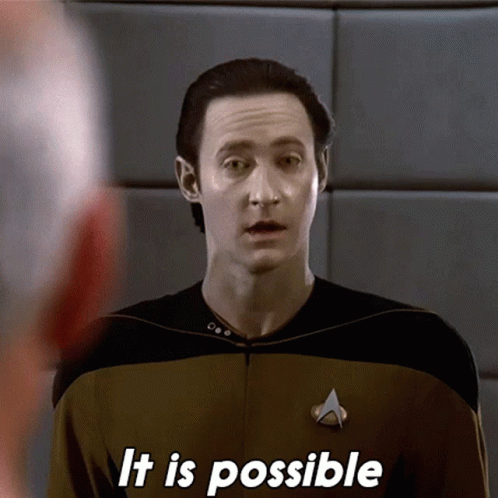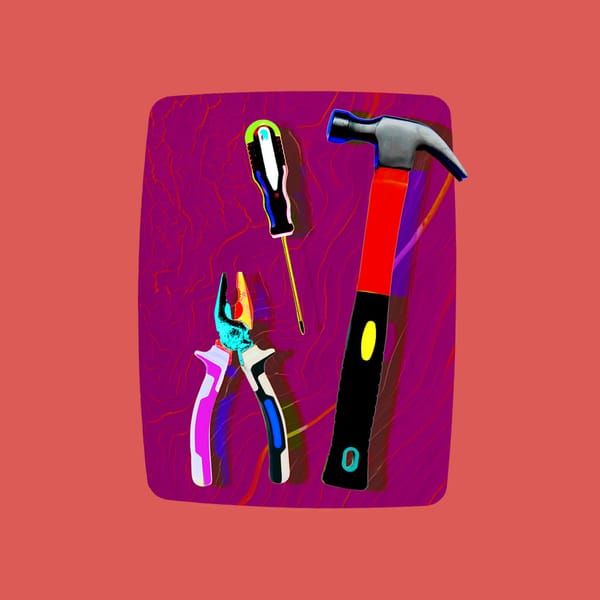A Reluctant Marketer’s Take on the Machine in the Room
By: LaNae Riviere of FMK Agency
I have a complicated relationship with AI in marketing. On the one hand, I hate everything about it, and on the other, it’s something I have to live with if I want to work in my field.
Professionally, I work in a marketing agency. Personally, I’m a published author and a published landscape photographer. So when we talk about AI and creativity, I’m not coming at this from some abstract theoretical space. I’m coming at it as someone whose work, literally, (my words and my images), have been scraped, repackaged, and turned into training data for tools that now threaten to replace me.
That’s not a dramatic take. That’s the truth.
I’ve spent years honing a craft, building a body of work, and figuring out how to create something with a point of view. And now, we’re in a world where a prompt can spit out a convincing imitation in seconds. It’s infuriating. It’s demoralizing. And it’s happening whether I like it or not.
But I also work in digital marketing. I know the machine isn’t going away. Clients want speed. Teams want scale. Budgets are tight. Everyone’s looking for a shortcut, and AI is the shiny new toy dangling in front of every decision-maker who wants to do more with less.
So here I am. Deeply conflicted. Grieving, honestly. But also trying to figure out whether coexistence is possible, and if so, what it actually looks like in practice.
What Artists Hate, And Rightfully So
We didn’t sign up to be training data. And yet here we are, with tools that now claim they can do what we do "faster and cheaper." It’s theft, dressed up as innovation.
The damage isn’t just financial, either. It’s emotional. It’s existential. When something you poured your heart into can be mimicked by someone who typed five words into a box, it cheapens the entire process. It doesn’t just take your work. It takes your worth.
But here’s the real rub: what’s produced isn’t even good.
It’s a pale imitation, a plastic veneer.
Most of the time, it just sounds like us, or looks like something we might make, without the soul, without the wit, without the complexity.
Unfortunately, the onus is on us to speak for ourselves and cut through the ‘efficiency’ chanting in leadership to drag their attention back to quality.
The Marketing Industry Loves a Shortcut
If you work in content marketing, you’ve already heard the pitch. AI can automate content. AI can scale ideation. AI can generate endless variations for A/B testing. And technically, that’s true.
The question is: do you care about the outcome?
Because what AI is good at—bland summaries, recycled phrasing, high-volume output—it’s also what most of us have spent years trying to write against. The best marketing isn’t generated. It’s felt. It’s specific. It connects. And that still requires human brains.
But marketers love sparkly tech, and AI has become the new team member no one hired but everyone is expected to work with. Even if the results are worse. Even if the voice is off. Even if the message is meaningless. The speed sells it.
I’ve had that boss, so you know. The one who pushed AI into my workspace and directly onto our team, and then wielded it as a stick to threaten his writers and artists with termination (and ultimately did use it to fire some of us). In the end, I stopped caring, the designers stopped caring, and what was being produced barely mattered.
So, how do we explain the difference to our bosses? How do we advocate for us, for the art we make, for the disciplines we learned, the money spent to learn them, and the overall point of what we make to the people who sign our paychecks?
I have a few ideas.
Practical AI Use, Without Sacrificing the Work
Okay, fine. AI is here to stay, and it’s not doing our dishes or taking out the trash. It’s here to make marketing bros and tech nerds feel less dependent on the art school kids they don’t like (if that stung, it was supposed to). It’s here to give them the opportunity to stand on level playing fields with us, without feeling targeted because they can’t write or make designs. And hey, whatever. For the sake of progress, let’s say that’s okay by us. Now, how do we show them they still actually need us?
Easy, hit ‘em with process.
Here’s a practical approach to AI best practices for marketing teams, with clear boundaries:
1. If a human can do it better, you don’t need a machine. Don’t automate what’s already working. Great writing, original thinking, clear messaging—if you’ve got a person who does that well, keep them doing it. AI should fill gaps, not replace quality.
2. Stop reaching for the machine before you know what you want. Don’t use AI to replace brainstorming. If your strategy isn’t clear, no tool is going to fix that. Start with humans. Map your ideas. Then, and only then, use AI to build efficiencies around your vision, not in place of it.
3. Don’t be lazy. Using AI to outline? Fine. But you’d better have a human ready to develop that outline into real content. Otherwise, what you’ll end up with is recycled, derivative, and often inaccurate sludge that makes your brand look lazy.
4. Use AI for mechanical tasks, not message creation. Formatting. Transcribing. Summarizing meeting notes. That’s fair game. But if you’re using AI to define your tone of voice or write your customer story, you’re handing over the one thing that should make your brand unique.
5. Make the human accountable for the final draft. Whatever AI generates, someone needs to own it. Review it. Challenge it. Rewrite it. No tool should publish on behalf of your brand without a human gut check. Because your audience will feel the difference.
What Artists Can (Maybe) Take Back
Fighting for attribution and rights. We should know when our work is used, how it’s used, and have the option to opt out. That’s not radical—it’s baseline respect. Every industry that relies on creative work should demand better standards from platforms.
Creating our own standards. Whether it’s through unions, collectives, or collaborative networks, artists need to align on what’s acceptable and what isn’t. We don’t need to agree on everything, but we do need leverage, and that starts with solidarity.
Demanding transparency from platforms. If a tool is trained on stolen work, we have a right to call it what it is: stolen. No more hiding behind “public data” or vague sourcing. If your product was built on creative labor, the people who made that labor possible deserve credit, compensation, and clarity. And if you can’t do that and still must use the tool, say so, and say it the intention to develop that citation further.
This won’t roll back the tech. But it can put pressure on how it’s built, sold, and used. And it can remind the world that creators are not commodities. We’re not features. We’re not “content providers.” We’re the reason any of this exists at all.
We won’t stop AI from existing. But we can challenge how it’s used, and who benefits.

Living With the Machine, Without Losing Ourselves
This is the line we’re all trying to walk now: using the tool without becoming a tool.
We can reject the hype, refuse the lazy shortcuts, and still survive in the industries that are buying into it. It means holding the line on what creative work is worth. It means reminding people, loudly, that craft still matters. It means being honest about what we’re losing, and not pretending it’s progress when it’s just cheaper output.
Can I live with AI? I don’t know.
But I can work around it.
And I can make damn sure it doesn’t replace the part of the work that actually matters.
That’s the line.That’s the fight.And I’m still in it.










